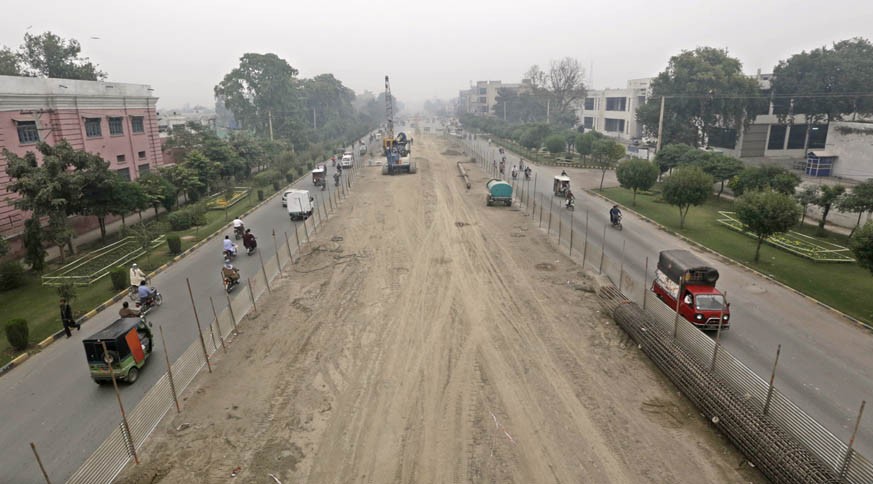
Raised road levels have reduced several residential localities to low-lying areas, causing flooding and blocked sewerage

Over the past almost two decades, Lahore has been subjected to massive road changes, in the name of urban development, following which almost every other road and street in the city has been remodelled/reconstructed. The problem arises when you raise the level of the roads without considering its consequences. And, that’s precisely what we are witnessing right now.
The raised road levels have reduced several residential localities to low-lying areas. Further, they are the cause of urban flooding and blocked sewerage.
As a matter of fact, the contractors of Lahore Development Authority (LDA), Town Administrations (TAs), City District Government of Lahore (CDGL), and other government agencies like WASA and TEPA remake roads without proper digging and compacting which is how they should actually go about it. Instead, they shave the upper asphalt layer and re-carpet it, which raises its level.
Citizens complain that the situation is indicative of the apathy of government agencies, as tenders of road construction were given without careful consideration and proper supervision of construction work. Ferozpur Road, Jail Rd, Multan Rd, GT Rd, Canal Bank Rd, and The Mall are some of the examples.
Consequently, Johar Town, Muslim Town, Wafaqi Colony, Garden Town, Wahdat Colony, Ichhra, Shadman, Shah Jamal, Canal Bank, Gulberg, Mian Mir Colony, Samanabad, Sabzazar, and several blocks of Iqbal Town and Model Town have turned into low-lying areas.
These localities are witnessing repeated sewerage disposal issues. In the event of a downpour, water collects and its level sometimes goes alarmingly up, resulting in urban flooding. During monsoon, in particular, standing waters are a huge problem for the citizens and often become breeding grounds of mosquitoes.
The issue is not confined to the main roads and adjacent localities. A number of inner roads (within the premises of different residential areas and localities) have been remade in much the same way. Ahsan Shah, a resident of Alhamd Colony, says the main entrance to his house is now below the road level, "After a heavy shower, it becomes very difficult for us to access the door."
Another issue that plagues them in such an eventuality is how to throw out the rainwater. Rehman Gallian, an allied street on Nishter Road that leads from Railway Station to Adda Crown, is one example of a street that has gone almost 2-3 feet below the ground level.
Shakeel Ahmed Butt, a resident of the locality, says the people are "facing serious problems of blocked sewers and stagnant rainwaters.
"Every shower means trouble for us, as rainwater gets mixed with sewerage spillovers that stay on the roads for several days."
Johar Town, considered to be a posh locality, is also facing similar issues. Residents of blocks E, F, G, and H, as well as those in Samsani Village (which lies in the centre and hosts several commercial markets) are the worst affected. "WASA employs machines that suck out water from the main and allied roads," says Jamil, a shopkeeper in the G-1 Market.
"Similarly, the sewerage system of the area remains blocked all the time. Whenever a complaint is lodged [with WASA], their standard reply is that this can’t be helped unless a sewerage water alleviating system is installed."
The residents in affected areas are hopelessly looking towards the CM Punjab Shahbaz Sharif and his senior officials in different civic bodies, waiting for them to address the issue and ensure implementation of the Standard Operating Procedures (SOPs), if any, while undertaking the construction of any roads in the city.